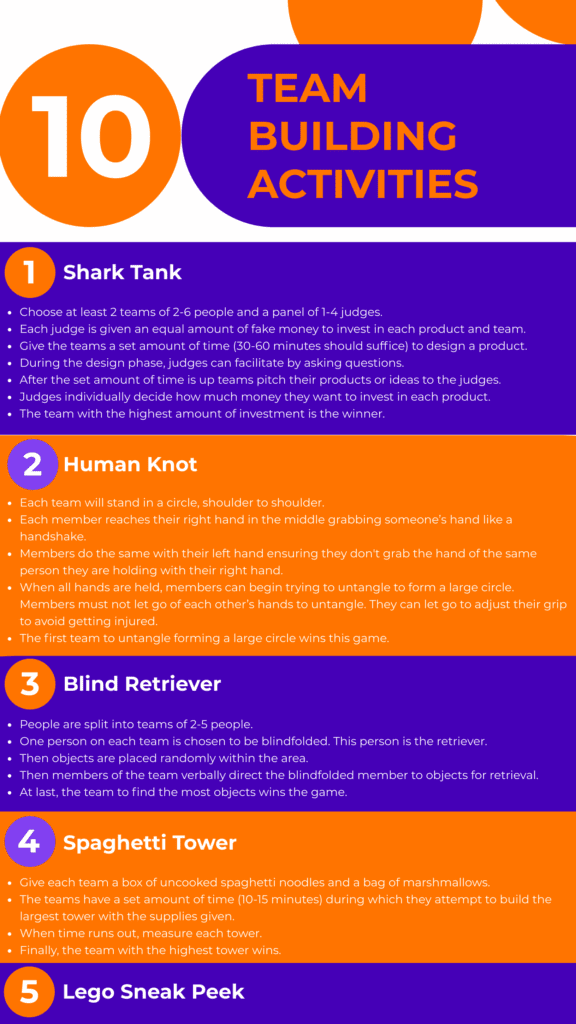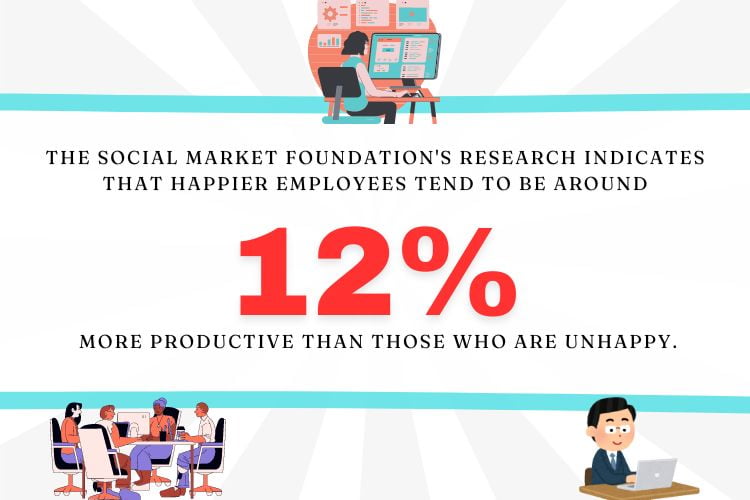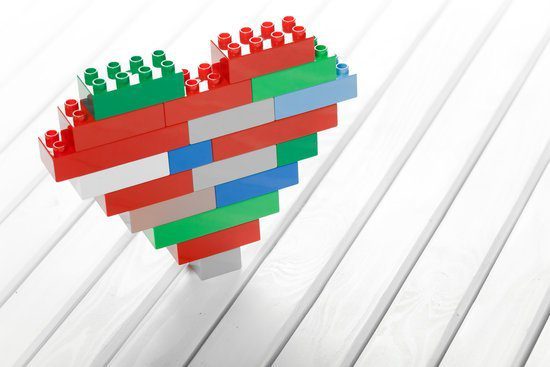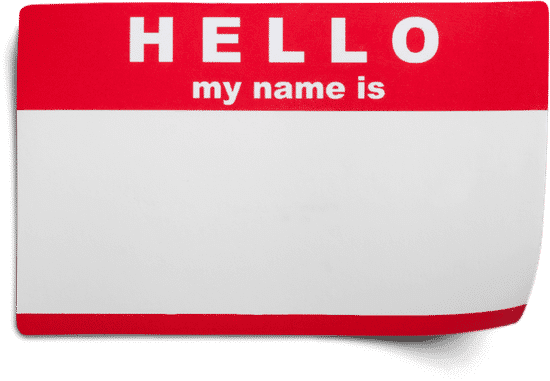Does your team run like a well-oiled machine? If not, they may need some bonding. Team building activities are a great way to get everybody working together toward a common goal. The time invested in team building brings members closer and can also have lasting effects that will pay dividends long after the games are over.
These activities can be done in the office or out of the office. In-office exercises are good for convenience but out of the office, activities can offer greater benefits to the employees. Generally, taking the employees out of the office and into a more comfortable atmosphere can help get the employees into a better state of mind. Therefore, making them more open and receptive. Even if you are just going out into the lawn right outside your building.
Jump To Section
Get Your Team Outside Their Comfort Zone
As the saying goes, “You can’t know where you’re going until you know where you’ve been.” When it comes to your employees’ growth as individuals and as a team, this is especially true. By forcing your employees to get out of their comfort zones and try new things, they’ll grow in ways they wouldn’t have thought possible and they’ll be able to bring those experiences back into the office with them. You might be surprised by the results!
All of these activities will build strong teamwork and help your employees work together more effectively. In addition, they’ll give new employees a chance to learn about the company culture and make connections with their co-workers.

Benefits of Team Building Games

- Team building activities for employees increase productivity. This is a no-brainer, right? When you put a bunch of people together who enjoy each other’s company and are working toward a common goal, they’re going to work harder and do better work than they would if they were isolated from one another in cubicles. But it’s not just about the motivation to do well on the job; it also comes down to basic human needs like social interaction and support. Employees who feel close with their coworkers will be more likely to go out of their way for one another, which ultimately makes them more productive as well as happier during the day.
- It produces less in-fighting. When people work together, they often have different ideas and opinions. They might clash with each other over how to best accomplish a task or make decisions on an issue. Team building exercises can help you manage conflicts between coworkers by helping them see things from each other’s perspectives, which allows them to produce less conflict in the future. The more your employees understand one another and work together as a team, the easier it will be for them to solve problems quickly so that the business can run smoothly.
- Leads to better communication. Team building exercises can be a great way to improve communication skills. In fact, it’s one of the most important skills for any team to have. Good communication is what makes a successful business and lets you get things done quickly and efficiently. It’s also something that every employee should be working on improving—there’s no such thing as too much communication training! A good team building activity will give your employees a chance to practice communicating with one another in new ways and build their personal brand within the company.
- Increases motivation. Motivation is a powerful force that can help you get more done in less time. If your employees are feeling unmotivated, then it’s likely they won’t be putting 100% effort into everything they do on the job. This means that any project will suffer from a lack of quality or attention to detail, which could have negative consequences for both the employee and the company itself. The solution? Team building exercises! When people participate in team-based activities together they’re able to bond with each other over shared experiences that make work feel more like fun than drudgery. As these bonds strengthen over time, employees will find themselves working harder because they want their teammates’ approval rather than being forced by management.
- Team building activities build trust among employees. Trust is an essential ingredient in any good relationship. It’s important for work, too—trust among your employees will help foster a more productive and collaborative environment. Team building exercises are one way to build trust among your team members, but they don’t always have to be serious.
- Encourage creativity. Team building exercises are a fun way to encourage creativity. Team members who have worked together for a long time can sometimes get into a rut and forget about the creative ideas that got them started in the first place. A team building exercise can shake things up, allowing employees to look at the business from a different perspective and rediscover their original vision for it.
- Develops problem-solving skills. Problem-solving is at the core of any business, and it’s a skill that can be developed over time. Team building exercises offer an opportunity to identify a problem, develop solutions, and apply those solutions in the real world. In other words, they give your employees the chance to get out of their comfort zones and solve problems together. This will help them build trust with one another and create a sense of community within your office or team. It will also allow you, as their manager or leader, to understand them better so that you can provide more effective guidance when they need it most!

Awesome Team Building Activities and Bonding Exercises
1. Shark Tank

Required Personnel: At least 2 teams of 2-6 people. 1-4 judges.
Environment: Can be in or out of office.
Time: 1-2 hours
Team Building Elements: Communication, Cooperation
Objective: Have a product chosen by the panel of judges to be invested in.
How to play:
- Choose at least 2 teams of 2-6 people and a panel of 1-4 judges.
- Each judge is given an equal amount of fake money to later be used to invest in each product and team.
- Give the teams a set amount of time (30-60 minutes should suffice) to design a product. It can be a physical prototype or just a design on paper depending on resources. Teams must come up with a team name, business plan, design, marketing strategy, and also financial data for their product.
- TIP: Having the employees make a product to fill a need within the organization can be great and may lead to some additional benefits.
- During the design phase, judges can facilitate by asking questions but should refrain from offering advice or guidance to the teams.
- After the set amount of time is up teams pitch their products or ideas to the judges. Judges are encouraged to ask questions to decide which product they want to invest in.
- After all the teams have pitched their products, the judges individually decide how much money they want to invest in each product.
- The team with the highest amount of investment is the winner.
Supplies:
- Writing Utensils
- Paper for Writing/Drawing
- Fake money (optional)
- Construction Paper for Building a Prototype (optional)
- Scissors (optional)
- Glue (optional)
See Related: Brian Tracy Leadership Questionnaire
2. Human Knot

Required Personnel: At least 2 groups of 6-10 people. Teams must have an even number of people on them.
Environment: Can be in or out of office.
Time: 15 minutes
Team Building Elements: Problem-Solving, Cooperation
Objective: Be the first team to untangle and form a large circle.
How to play:
- Each team will stand in a circle, shoulder to shoulder.
- Team members reach their right hand into the middle grabbing someone else’s hand like a handshake until everyone is holding a hand.
- Next members do the same with their left hand ensuring they do not grab the hand of the same person they are holding with their right hand.
- When all hands are held, members can begin trying to untangle to form a large circle. Members must not let go of each other’s hands to untangle. They can let go to adjust their grip to avoid getting injured.
- The first team to untangle forming a large circle wins this game.
3. Blind Retriever Game

Required Personnel: At least 2 teams of 2-5 people.
Environment: Can be in or out of the office.
Time: 30 minutes to 1 hour
Team Building Elements: Communication
Objective: Be the first team to grab all objects.
How to play:
- People are split into teams of 2-5 people.
- One person on each team is chosen to be blindfolded. This person is the retriever.
- Then objects are placed randomly within the area.
- Then members of the team verbally direct the blindfolded member to objects for retrieval.
- At last, the group that finds the most objects wins the game.
Supplies:
- Random Objects from the Office for Placing
- Blindfolds
4. Spaghetti Tower

Required Personnel: At least 2 groups of 2-8 people.
Environment: Can be in or out of office.
Time: 25 minutes
Team Building Elements: Problem-Solving
Objective: Build the largest tower after a given amount of time.
How to play:
- Give each team a box of uncooked spaghetti noodles and a bag of marshmallows.
- The teams have a set amount of time (10-15 minutes) during which they attempt to build the largest tower with the supplies given.
- When time runs out, measure each tower.
- Finally, the group with the highest tower wins.
Supplies:
- Marshmallows
- Spaghetti Noodles
5. Lego Sneak Peak Team Building Game

Required Personnel: At least 2 groups of 3-6 people.
Environment: Can be in or out of office.
Time: 30 minutes
Team Building Elements: Communication
Objective: Construct an exact replica of a hidden Lego tower.
How to play:
- Prebuild a tower out of 8-12 Legos.
- Fill a bag for each team with the same Legos used on the tower.
- After teams are chosen, pick one person to take out of the room. Then show the prebuilt tower for 20-30 seconds to this person.
- Then this person returns to their group and gives instructions to the rest of the team on how to build the tower. The person seeing the tower last can’t touch the Legos.
- After about 1 minute, take another person from each team to see the tower for 20-30 seconds.
- Repeat this process until a group builds an exact replica of the prebuilt tower.
- Tip: You may want to take pictures of the prebuilt tower with your phone to easily see if a team has built the tower correctly.
Supplies:
6. Perfect Square

Required Personnel: At least 2 teams of 4-6 people.
Environment: Can be in or out of office.
Time: 20 minutes
Team Building Elements: Communication
Objective: Form the best square out of rope.
How to play:
- Teams form a circle and are given a 6-8 foot rope.
- They are then blindfolded.
- Then, teams attempt to work together and form the rope into a perfect square for 5-7 minutes.
- After the time is up, everyone stops and takes off their blindfolds.
- In conclusion, the group with the best square wins the game.
Supplies:
7. Name Game

Required Personnel: At least 2 groups of 6-12 people.
Environment: Can be in or out of office.
Time: 10 minutes
Team Building Elements: Non-Verbal Communication
Objective: Line up in alphabetical order based on middle names.
How to play:
- Team members line up shoulder to shoulder.
- Then, without talking, signing, or drawing the letters of their middle names, teams attempt to get into alphabetical order.
- After 5 minutes or when teams have finished adjusting, members start naming off their middle name.
- Every member out of order counts as 1 point.
- To conclude, the group with the least amount of points wins.
8. Escape Room

Required Personnel: 4-8 people.
Environment: In office.
Time: 1.5 hours
Team Building Elements: Problem-Solving
Objective: Solve puzzles to find a code word and escape a locked room before time runs out.
How to play:
- Set up a room with 8-10 puzzles. Each puzzle represents a letter spelling out a codeword.
- Instruct members that they have 60 minutes to work together to complete all the puzzles and say the codeword.
- If a puzzle isn’t completed after 8 minutes you will give them the answer and move on to the next puzzle.
- If the group can say the codeword before time runs out, they escape. Otherwise, they are doomed to whatever story you come up with.
- Tip: Choose a variety of puzzles, so everybody has a chance to help the team.
Supplies:
9. Office Trivia

Required Personnel: At least 2 teams of 4-6 people.
Environment: In office.
Time: 30 minutes
Team Building Elements: Cooperation
Objective: Answer more questions correctly than the other team.
How to play:
- Give groups a small whiteboard and a dry erase marker.
- Proceed to ask questions about the work center. For example, you can ask “how many desks are there”, “how many lights are there”, “how many clocks are there” etc.
- Then allow each team to confer and write down their answers on the whiteboard.
- Keep track of how many questions each squad got right.
- Finally, after 15-20 questions the team with the highest score wins.
Supplies:
10. Matched Pairs

Required Personnel: 8-16 people. Personnel must be an even number of people playing.
Environment: Can be in or out of office.
Time: 30 minutes to 1 hour
Team Building Elements: Communication
Objective: Match with the person wearing the same item as them.
How to play:
- To begin with, write down an object on each half of a paper. Then cut the paper in half. Objects can be things like pear, saltshaker, blanket, or whatever else you would like.
- Next, tape an object to each person’s back.
- Then each person tries to find their pair by asking questions. The catch is that the questions can only be yes or no questions and once somebody asks a person 2 questions, they must move onto another person and ask 2 questions.
- The game is over when all people have found who they believe to be their pair.
Supplies:
- Paper
- Tape
- Scissors
Choosing the Right Team Building Activity For Your Squad
Choosing the best team building activity is crucial in not only having the most fun but also getting the most out of it.
Each game has different elements that they focus on for building a strong team. Some focus more heavily on communication whereas others may focus on problem-solving skills.
To determine which game is best for your team try to find an area that your group may need some work in. Having a clear outcome in mind will give your team the most benefits while still having a good time.
If teams are severely lacking in areas like communication you will have to be more of a facilitator. Ensure everyone has the opportunity to participate and stop any disagreements before they get out of hand. Make sure everyone involved understands that it is a fun, friendly environment.
Remote Team Building Games/Activities
If you manage a remote team you can still utilize virtual team-building activities to bring your group closer together. These activities for remote groups can still have many of the benefits of in-person team-building games. If you run a virtual team you should start implementing some of these into your work schedule and meetings. To learn more check out my article on virtual team-building activities.
Why Is Team Building For Work Important
There are 5 elements of team building; they are:
- Communication skills
- Problem-solving skills
- Decision-making skills
- Leadership skills
- Group dynamics
Basically, team building is the process of helping people to work together more effectively by improving their individual and group skills. Team building can be especially useful when working with virtual groups or people who haven’t worked together before. It will help them to understand how others work and what they bring to the table so that they can better coordinate their efforts and work towards common goals.
Team building is not only about improving the skills of individual members but also about creating a shared identity within the team, which helps them feel like they’re part of something bigger than themselves.
This sense of belonging can boost motivation and encourage team members to support one another, thereby enhancing overall productivity. Moreover, team building activities provide an opportunity for team members to understand each other’s strengths, weaknesses, work styles, and personalities. This understanding can foster empathy and reduce potential conflicts, making the team more cohesive and resilient in the face of challenges.
By focusing on elements like communication skills, the team learns to convey their ideas and feedback effectively, ensuring that everyone is on the same page. Problem-solving skills enable the team to tackle obstacles creatively and efficiently, while decision-making skills ensure that choices are made swiftly and in the best interest of the project.
Leadership skills cultivated during team building empower individuals to take initiative, guide their teammates, and provide direction when needed. Lastly, understanding group dynamics allows the team to operate smoothly by recognizing the unique contribution each member makes and leveraging these differences to enrich the team’s performance.
In essence, team building is crucial for fostering a positive and productive work environment. It helps in breaking down barriers between individuals, promoting mutual respect, and encouraging collaboration.
By investing in team building, organizations can enhance team performance, boost employee morale, and ultimately achieve better project outcomes. It’s a pivotal aspect of organizational development that aligns personal growth with the strategic goals of the company, making it an indispensable tool for managers and leaders aiming to cultivate high-performing teams.
The Importance of Employee Satisfaction In The Workplace
Employee satisfaction is crucial in any workplace. After all, happy employees are productive and loyal employees—and that’s what you want!
If you want to keep your team happy, there are a few things you can do:
- Make sure they feel appreciated by their employer. If you don’t make it clear that you value their work, then they’re less likely to stick around for long.
- Keep communication lines open. Every employee wants to feel like they have a voice in the company, and if they don’t feel like they can communicate with management about issues or concerns, then they might start looking elsewhere for jobs where they do have that freedom of speech.
- Encourage collaboration between coworkers so everyone has an idea of what everyone else is working on at any given time. When people know how their work fits into the bigger picture of the company as a whole, it makes them more motivated and engaged in their jobs because they see how everything connects together and how important it is for them to do their best work every single day!
Conclusion
Team building activities can boost camaraderie and morale within a work center. Sometimes employees may be a little uncomfortable in the beginning, but they tend to get into it and want to work together to win. A little competition can help the employees have fun while doing these exercises. Having fun while learning to work together is the goal.
If you enjoyed this article on team-building activities for work please don’t forget to share and subscribe using the buttons below.

